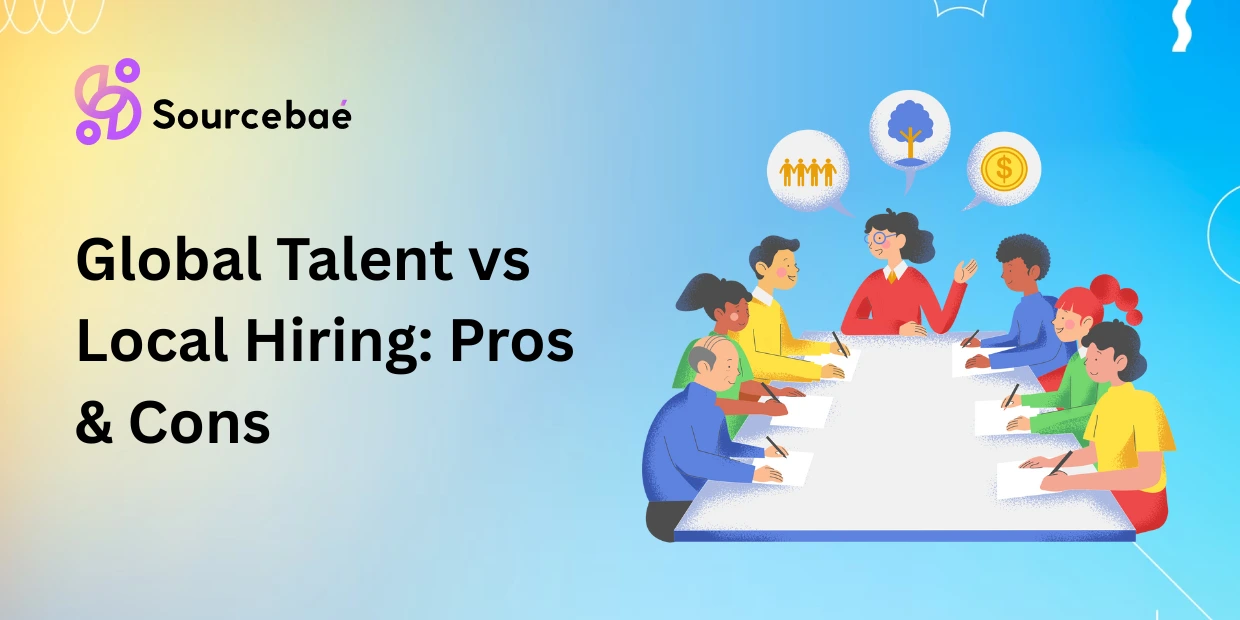This comparison will explore three popular JavaScript frameworks used for web development: Vue.js, React, and Angular. Web development is a rapidly evolving field, and choosing the proper framework is crucial for the success of a project. Each framework has unique features and characteristics, making it suitable for different scenarios.
This comparison will provide insights into the background, key features, popularity, learning curve, performance, development speed, use cases, community support, flexibility, and real-world case studies of Vue.js, React, and Angular. By the end of this comparison, you should better understand which framework aligns with your specific project requirements and development preferences. We’ll also touch on staying current with the ever-changing web development landscape.
Let’s dive into the world of Vue.js, React, and Angular to help you make an informed decision about the best framework for your next web development endeavor.
Background and History
Vue.js
Vue.js, often called Vue, is a progressive JavaScript framework created by Evan You. Its development began in 2014, and the first official release occurred in February 2014. Vue was designed to be incrementally adoptable, making it easy for developers to integrate it into existing projects. It quickly gained popularity for its simplicity and flexibility, and it is open-source, allowing a thriving community of developers to contribute to its growth.
React
React, developed and maintained by Facebook, was released in 2013. React is known for introducing the concept of Virtual DOM, which significantly improved the efficiency of web applications by reducing the need to re-render the entire page. React’s use of JSX, a syntax extension for JavaScript, has also played a significant role in its popularity. It is widely used in many Facebook and Instagram products and has a large community of developers worldwide.
Angular
AInitially developed by Google, hAngular was first released in 2010 under the name AngularJS. It underwent a significant rewrite and architectural overhaul, resulting in Angular 2 and subsequent versions. This transition introduced Angular as a full-fledged platform for building web applications, with features like dependency injection and TypeScript support. Its history and significant changes have led to debates about whether to consider AngularJS (1. x) and Angular (2+ versions) as the same framework or different entities.
These frameworks have different origins, historical trajectories, and philosophical foundations, influencing their design and usage in web development. Understanding their background and history is essential for making an informed choice when selecting a framework for a project.
Key Features and Concepts
Vue.js
- Component-based architecture: Vue.js is centered around the concept of components. A Vue application is built by creating reusable components that encapsulate their templates, data, and behavior, promoting modularity and maintainability.
- Vue directives: Vue introduces demands like
v-bind,v-model, andv-for, which enables developers to render and manipulate the DOM declaratively. This simplifies the process of connecting data to the view. - Two-way data binding: Vue provides two-way data binding out of the box, allowing data changes to update the view automatically and vice versa. This feature reduces the need for manual DOM manipulation.
React
- Virtual DOM: React uses a virtual representation of the DOM to optimize updates. React minimizes unnecessary re-renders and enhances application performance by calculating the difference between the virtual and actual DOM.
- JSX (JavaScript XML): React allows developers to write UI components using JSX, a syntax extension that combines JavaScript and HTML. JSX simplifies component rendering and improves code readability.
- Unidirectional data flow: React enforces a one-way data flow, making it clear how data flows through the application. This simplifies debugging and ensures predictable component behavior.
Angular
- Dependency Injection: Angular utilizes a hierarchical system for managing dependencies and services. This promotes the reusability and testability of components and services within the application.
- Two-way data binding: Angular offers two-way data binding by default, allowing changes to data to reflect in the view and vice versa immediately. While powerful, it requires careful management to prevent unintended side effects.
- TypeScript support: Angular is written in TypeScript, a statically typed superset of JavaScript. This gives developers solid typing, enhanced tooling, and improved code quality.
Each framework incorporates unique features and concepts influencing how developers approach web development. Vue.js focuses on simplicity and adaptability, React introduces a virtual DOM for performance optimization, and Angular emphasizes strong typing and a comprehensive development ecosystem. Understanding these core features and concepts is crucial for choosing the most suitable framework for a given project.
Performance
Vue.js
- Rendering Efficiency: Vue’s virtual DOM and reactivity system provide efficient rendering. Vue updates only the parts of the DOM that have changed, reducing unnecessary DOM manipulation and enhancing performance.
- Load Times: Vue.js has a small footprint, making it lightweight and quick to load. This is advantageous for applications where fast initial loading is crucial, such as single-page applications (SPAs).
- Memory Usage: Vue’s reactivity system minimizes memory consumption by efficiently managing component instances. This can result in lower memory overhead compared to some other frameworks.
React
- Rendering Efficiency: React’s virtual DOM allows for efficient updates by calculating and applying only the necessary changes to the real DOM. This approach optimizes performance by reducing the number of DOM manipulations.
- Load Times: React’s initial load time is competitive due to its efficient rendering strategy. However, the size of the application and the number of dependencies can impact load times.
- Memory Usage: React generally maintains a reasonable memory footprint. Memory usage can be controlled by efficient component management and data handling.
Angular
- Rendering Efficiency: Angular employs a similar virtual DOM strategy and change detection mechanism to optimize rendering. However, it can become less efficient in complex applications with many components and bindings.
- Load Times: Angular applications tend to have a slightly longer initial load time due to the framework’s larger size and more complex architecture. Proper bundling and optimization can mitigate this issue.
- Memory Usage: Angular applications can consume more memory, especially in applications with numerous components and complex data structures. Developers need to be mindful of memory management.
Performance in web development is a critical factor that can impact user experience. Vue.js and React are known for efficient rendering through virtual DOM, resulting in minimal DOM manipulations and faster updates. Angular also employs a virtual DOM strategy but may require additional optimization for complex applications to maintain high performance. The choice of framework should consider the specific performance requirements of the project at hand.
Learning Curve
Vue.js
- Ease of Getting Started: Vue.js is often praised for its gentle learning curve. Its straightforward syntax and clear documentation make it accessible to beginners. Developers with basic HTML, CSS, and JavaScript knowledge can build applications with Vue quickly.
- Documentation and Tutorials: Vue.js provides comprehensive and user-friendly documentation, including numerous tutorials and examples. This extensive resource library helps developers learn and master the framework at their own pace.
- Complexity and Scalability: Vue’s simplicity is a double-edged sword. While it’s easy for beginners, it might require additional planning and tooling as the application scales. Nevertheless, Vue offers flexibility to accommodate complex projects.
React
- Ease of Getting Started: React’s learning curve can be steeper for beginners due to the introduction of JSX and the need for a build system. However, React’s concepts become more apparent once these hurdles are overcome.
- Documentation and Tutorials: React also offers extensive documentation and a wide array of tutorials and guides. It benefits from a large community, which provides various resources for learning and problem-solving.
- Complexity and Scalability: React is designed for scalability, and its component-based architecture encourages the development of large, maintainable applications. It might require some understanding of state management libraries like Redux or Mobx for complex projects.
Angular
- Ease of Getting Started: Angular’s learning curve is generally considered the steepest. The framework’s rich feature set and TypeScript usage can be daunting for newcomers. However, this complexity is offset by Angular’s capabilities.
- Documentation and Tutorials: Angular’s official documentation is extensive, but the sheer volume of information can be overwhelming. A wealth of tutorials and third-party resources are available to aid in learning.
- Complexity and Scalability: Angular is designed for large, enterprise-level applications. While it can handle complexity well, its extensive feature set and architectural decisions require a deeper understanding of TypeScript.
The learning curve for each framework depends on your prior experience and project requirements. Vue.js is beginner-friendly and suitable for small to medium-sized projects. React offers a balance between scalability and ease of learning. Angular is powerful but may require a significant investment in learning time, making it better suited for large and complex applications. Your choice should align with your team’s skill set and project complexity.
Pros and Cons
Vue.js
Pros:
- Simple and intuitive syntax.
- Small bundle size and fast initial load times.
- Excellent documentation and active community.
- Progressive framework for easy integration.
- Flexible and suitable for small to medium-sized projects.
Cons:
- Limited resources for enterprise-level scalability.
- More miniature ecosystem compared to React and Angular.
React
Pros:
- Efficient virtual DOM for high-performance rendering.
- Oversized and vibrant community with a wealth of third-party libraries.
- JSX enhances code readability and maintainability.
- Strong focus on component reusability and a unidirectional data flow.
- Suitable for projects of varying complexity.
Cons:
- Learning curve for beginners, especially with JSX and build tools.
- Requires additional state management libraries for complex applications.
Angular
Pros:
- Full-featured framework for building complex, large-scale applications.
- Strong typing with TypeScript for improved code quality and tooling.
- Dependency injection and robust testing capabilities.
- Extensive official documentation and resources for enterprise-level development.
- Comprehensive ecosystem, including Angular Material and CLI.
Cons:
- There is a steeper learning curve, particularly for developers new to TypeScript.
- Larger bundle size and longer initial load times.
- It may be overkill for small to medium-sized projects.
Conclusion
In conclusion, the choice between Vue.js, React, and Angular depends on various factors, including the project’s scope, team expertise, and performance requirements.
- Vue.js is an excellent choice for small to medium-sized projects due to its simplicity, small bundle size, and ease of learning. Its progressive nature makes it suitable for gradual integration into existing applications.
- React strikes a balance between scalability and accessibility. Its efficient virtual DOM and large community make it a solid choice for many projects, provided you’re willing to overcome the initial learning curve.
- Angular is ideal for large and complex enterprise-level applications. Its comprehensive feature set, strong typing with TypeScript, and robust architecture make it a powerful choice for such projects. However, its steep learning curve may deter beginners and smaller projects.
Ultimately, the decision should be based on the specific needs of your project and your team’s familiarity with the framework. Consider factors like performance, community support, and the long-term goals of your application when making your choice. Staying informed about the ever-evolving web development landscape is crucial for making the best decision for your projects.





